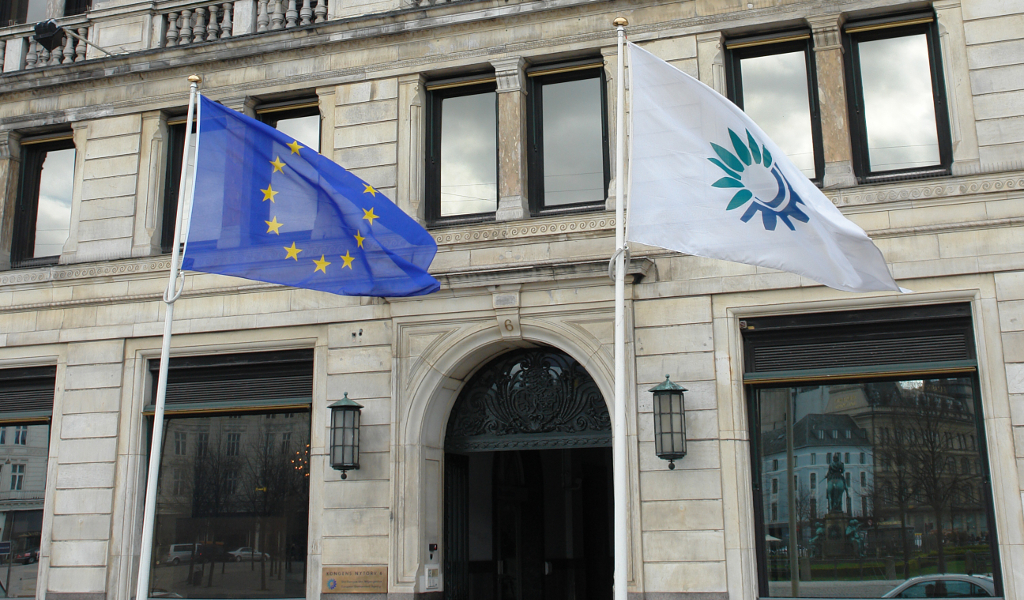 Slider / Stories
Slider / Stories
Adaptation to climate change is gaining increasing interest and attention by governments in Europe, and the information provided by climate services plays a crucial role in the development of effective adaptation strategies. To know more on the connection between adaptation and climate services, Climateurope asked some questions to André Jol, head of the programme on vulnerability and adaptation at the European Environment Agency. “Climate services allow to develop knowledge on current and projected risks and vulnerabilities – Dr. Jol explains – Regions and areas with particularly severe climate change impacts can then be identified, as well as sectors most at risk from climate change impacts.” In order to achieve these results, an effective link between climate science and society is needed, because, as Dr. Jol says: “Climate services are expected to be most effective when their products are developed in close collaboration with the intended users.”
Dr. Jol, how are adaptations strategies evolving at the European level?
There has been a steady increase over the last five years in national adaptation strategies and plans. By mid-2016, 23 EEA member countries (of which 21 EU Member States) had adopted a national adaptation strategy and 12 (of which 9 EU Member States) had developed a national adaptation plan. These actions were triggered by various factors including extreme weather events, damage costs, EU policies, and research findings.
Most progress is reported for freshwater and flood risk management, agriculture and forestry, and human health, with a focus on mainstreaming adaptation into national sectoral policy areas. However only few EEA member countries have started to monitor progress in adaptation policies at national level, and even fewer have started an evaluation of their effectiveness.
Furthermore many cities across Europe have started to develop and implement adaptation actions, supported by the EU funded Covenant of Mayors for Climate and Energy. Also regarding cities monitoring and evaluation of adaptation actions has only recently started.
The 2013 EU strategy on adaptation to climate change from the European Commission encourages all EU Member States to adopt comprehensive adaptation strategies. The strategy also promotes action in cities (see above) and mainstreaming adaptation in relevant EU policies and programmes; enhances research and information-sharing and provides funding for actions through various EU funds. In 2017/2018 the European Commission will assess whether action being taken so far is sufficient.
Which are the main initiatives of the EEA regarding adaptation and vulnerability to climate change?
EEA prepares its products and services with 33 member and six collaborating countries. The main target audiences are policymakers at European level, including the European Commission, the European Parliament and the Council of Ministers. Specifically in the area of climate change impacts, vulnerability, and adaptation EEA aims to support and inform policy development and implementation by means of data, information, indicators and assessments.
The past years EEA published assessment reports on adaptation in the transport sector and system; the state of play on national adaptation strategies and their monitoring, reporting and evaluation; an overview of national web-based adaptation knowledge sharing platforms and a report on urban adaptation. By the end of the year a report on climate change, impacts and vulnerability will be published. Next year a report on the linkages and synergies between climate change adaptation and disaster risk reduction will be finalized and published. Furthermore EEA manages the European Climate Change Adaptation knowledge platform (Climate-ADAPT) in collaboration with the European Commission and regularly updates and improves the platform, supported by many contributing organisations.
In all these activities EEA is supported by the European Topic Centre on climate change impacts, vulnerability and adaptation, funded by EEA.
Why are climate services relevant in order to design and realize effective adaptation strategies?
Climate services can provide important information on past, observed, and projected climate change and, to some extent, also the impacts on ecosystems, society and human health. Continuous monitoring of climate change, including e.g. essential climate variables, is important and climate services can provide access to these data. Scientifically up to date climate models can provide insights in the range of possible future climate change, at various temporal scales, e.g. seasonal to decadal, and with different spatial details. Outcomes from climate models are particularly useful when these are combined with socio-economic and other, spatial, data, such as on population and age distribution, critical infrastructure, ecosystems etc. This allows to develop knowledge on current and projected risks and vulnerabilities. Regions and areas with particularly severe climate change impacts can then be identified, as well as sectors most at risk from climate change impacts. Increasingly countries, river basins and cities prepare vulnerability and risk assessments, and climate services are important contributors. Based on such assessments governments, in collaboration with relevant stakeholders, as well as others, can assess different adaptation options and their costs and benefits. Climate services are expected to be most effective when their products are developed in close collaboration with the intended users.
Do we have any concrete examples to explain the role of climate services in Europe?
Climate services are emerging from various perspectives within Europe. These include the Copernicus climate change service, which has recently initiated a number of ‘proof of concept’ sectoral information systems, covering energy, water, insurance, agriculture, infrastructure and human health. Furthermore the Joint Programming Initiative ‘Connecting Climate Knowledge for Europe’ has started a European Research Area for Climate Services. This is designed to support research for developing better tools, methods and standards on how to produce, transfer, communicate and use reliable climate information. In addition many national climate services have started as well. Many of these initiatives try to involve users from the start. Thus many interesting and promising developments take place currently which can lead to successful, and complementary, climate services in the near future. Further experiences and sharing of these will be important in the coming years to allow an evaluation of the success of these services.
What about the challenges for the future of climate services in Europe?
A key challenge is how best to use data from climate services in combination with other information to improve transnational, national and urban climate change vulnerability and risk assessments. It is important to better address indirect and cascading effects between sectors and regions. Also assessments at the scale of river basins and bio-geographical regions will be needed. Another key challenge is how to enhance the use of climate data and climate services by businesses which so far is taking place only to a limited extent. A further challenge can be the difficulty for the intended non-expert users to select the climate service that best fits their needs, from the increasing number of different services as mentioned above.
Climateurope, our H2020 Project, aims at improving the link between climate science and society. In your opinion, what should be done in order to improve this link between the climate sciences community and the rest of the society?
There are various emerging adaptation services at national level and also at EU level, including e.g. the Climate Knowledge and Innovation Community focusing on the business sector and Climate-ADAPT focusing on governments at different levels. These services provide information complementary to climate services, e.g. on vulnerability and cost-benefit assessments, policies, tools and case studies. Climate change services and adaptation services could become increasingly integrated in the future, thereby delivering the services needed by the intended end users.
